10 Drought-Resistant Landscaping Ideas for Nevada
BY MELANIE JOSEPH | MAY 25TH, 2023 | LAWN CARE, NEVADANevada, being the driest state in the country, is no stranger to drought. The intense heat and limited water supply can make maintaining a lush garden difficult and expensive. So, if you’re looking to save water and money while creating a stunning outdoor oasis, consider these 10 drought-resistant landscaping ideas for Nevada.
A growing trend in sustainable landscaping has emerged, offering homeowners a way to create a beautiful outdoor space while reducing water usage. With drought-tolerant landscaping, you can choose plants and materials that require minimal watering.
In this article, we’ll cover:
- Opt for Desert-Friendly Groundcover Instead of Turfgrass
- Install Artificial Turf Instead of Real Grass
- Choose Drought-Resistant Native Plants
- Go With Perennials Instead of Annuals
- Implement Xeriscaping in Your Landscape Design
- Add a Rock Garden
- Plant Succulents in Your Garden
- Add Mulch to Your Plant Beds
- Choose Hardscapes Over High-Maintenance Plants
- Install a Drip Irrigation System
Benefits of Drought-Resistant Landscaping
Nevada’s scorching heat and drought conditions should not hinder you from creating a beautiful landscape design. Just because the desert climate can be harsh doesn’t mean you have to sacrifice your landscaping.
Drought-resistant landscaping has numerous advantages. Not only is it perfectly suited for the hot, arid climate of Nevada, but it also helps in water conservation. Additionally, this type of landscaping has these benefits:
- Eco-friendly
- Low-maintenance
- Can help you get rebates from water districts
Choosing drought-tolerant plants and implementing water-saving techniques can help you create a beautiful and sustainable landscape that thrives even in the most challenging conditions.
10 Drought-Resistant Landscaping Ideas for Nevada
If you want to reduce water use while promoting low maintenance and eco-friendliness in your garden, these 10 drought-resistant landscaping ideas can help. With these tips, you can transform your yard into a stunning oasis that not only looks great but also helps conserve one of Nevada’s most precious resources – water.
1. Opt for Desert-Friendly Groundcover Instead of Turfgrass
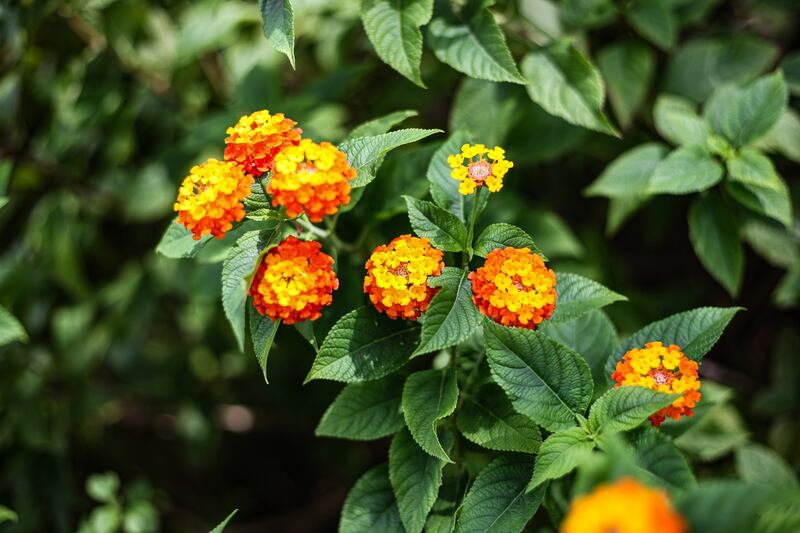
Photo Credit: Pixabay
Tired of spending hours mowing and maintaining your lawn every week? It might be time to ditch traditional grass and consider a more effortless option – drought-tolerant groundcovers. These low-growing plants quickly spread to form a beautiful, verdant carpet-like lawn.
Advantages of using groundcovers:
- They often thrive without chemical fertilizers
- Conserve water with drought-tolerant groundcovers
- A maintenance-free lawn with little to no mowing
- Don’t attract pests and weeds that affect most traditional lawns
While groundcovers still require some watering and sunlight, they’re much less demanding than traditional grasses. Moreover, Nevada homeowners have a range of drought and heat-tolerant options to choose from, including:
- Germander (Teurcrium majoricum)
- Lantana (Lantana camara)
- Pineleaf penstemon (Penstemon pinifolius)
- Trailing indigo bush (Dalea greggii)
Estimated Cost: Switching from turfgrass to groundcover can cost between $3.50 and $12.50 per square foot, depending on the groundcover type. Keep in mind that the expense may increase if you need to remove existing grass before planting.
2. Install Artificial Turf Instead of Real Grass
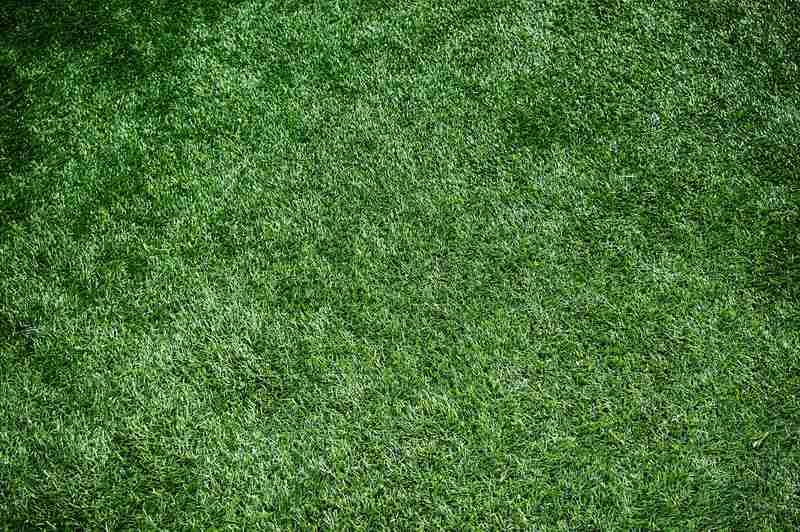
Photo Credit: Pixabay
If you’re still attached to the idea of a grass lawn but hate the maintenance, artificial turfgrass might be the answer. With this alternative, you’ll get the aesthetic appeal of a green lawn without having to spend time and resources on upkeep.
Thanks to advancements in technology, artificial grass looks more realistic than ever before, so much so that it’s tough to distinguish it from the real thing. It’s a fantastic option for those who prefer a beautiful lawn without the work.
Opting for artificial turf provides several benefits, including:
- Conserve water: With drought conditions a common concern in Nevada, artificial turf is a wise choice since it doesn’t require any watering.
- No pests allowed: Unlike natural lawns, artificial turfgrass doesn’t provide a habitat for rodents, insects, and other critters.
- Hassle-free alternative: Save time and effort with no fertilizing, mowing, watering, or pest control needed. Occasional cleaning will suffice to remove debris and bacteria buildup.
Note: Why go through all the trouble of maintaining a natural grass lawn when you can choose the alternative that complies with Nevada’s grass ban? Although the installation costs for artificial turf may be steep, the long-term benefits are significant. With it, you can scratch off lawn maintenance and reduce your water consumption. Moreover, your city or utility company might be offering incentives and rebates to encourage the installation of artificial turf.
Estimated Cost: The installation cost of artificial turf depends on multiple factors, such as the shape and size of your yard as well as the specific type of faux grass you select. Typically, hiring a professional for artificial turf installation can cost between $5 and $20 per square foot.
3. Choose Drought-Resistant Native Plants
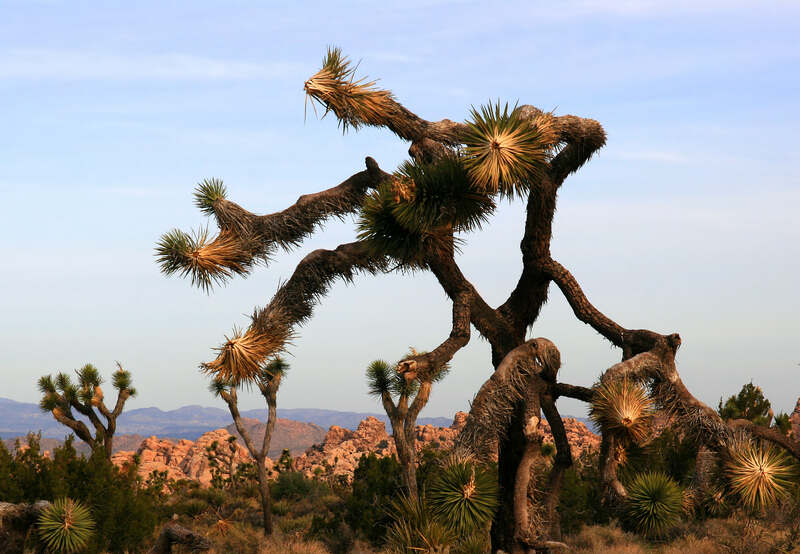
Photo Credit: Brocken Inaglory / Wikimedia Commons / CC BY-SA 3.0
Another way to reduce your landscaping maintenance and water consumption is to use native plants for your drought-tolerant garden. These water-efficient plants have evolved to thrive in the state’s unique climate, and they require minimal TLC to grow and flourish.
Fortunately, many drought-tolerant plants are well-suited to Nevada’s conditions, and there are numerous native plants to choose from, including:
- Creosote bush (Larrea tridentata)
- Desert marigold (Baileya multiradiata)
- Desert sage (Salvia dorrii)
- Joshua tree (Yucca brevifolia)
- Sticky purple geranium (Geranium viscosissimum)
Before incorporating native plants into your desert landscape, remember to choose the ones specifically native to your region. While some plants may thrive in Phoenix or Southern California, it doesn’t necessarily mean they can grow well in Las Vegas or other parts of Southern Nevada.
Always choose native plants ideal for your location, so you can enjoy its benefits:
- Supports and sustains the indigenous biodiversity of the region
- Thrives in desert landscapes without any artificial support or fertilizers
- Low-maintenance option as it requires fewer pesticides and chemical treatments
- Attracts local wildlife, birds, and pollinators by serving as a source of shelter, food, and nectar
- Low water needs compared to non-native plant species, making it ideal for water conservation efforts
Estimated cost: The cost of planting new shrubs or trees, or creating a new flower bed, can be determined by various factors such as plant size, type, and the size of the area you want to cover. On average, the cost of planting a new shrub can cost anywhere from $25 to $50 per plant, while you can expect to pay between $150 and $3,000 for a tree. For those looking to add a new flower bed to their landscape, the cost can vary from $600 to $3,000.
4. Go With Perennials Instead of Annuals
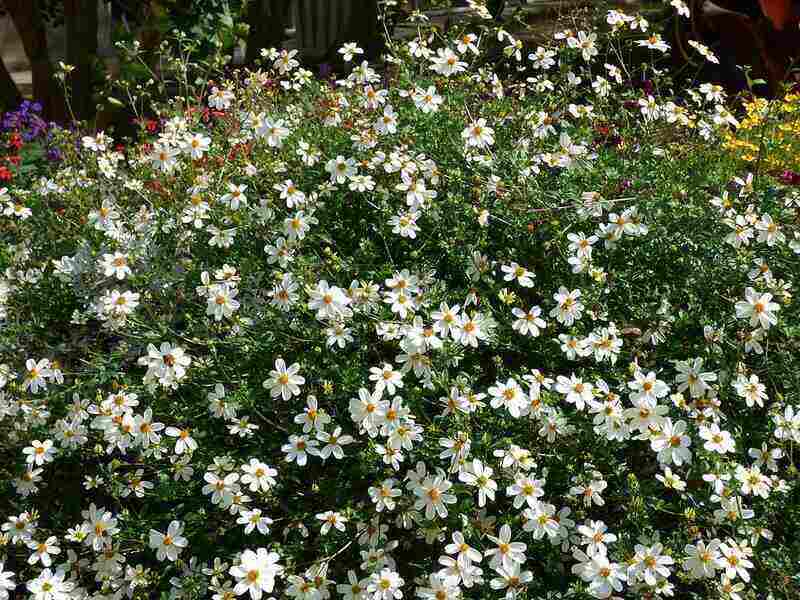
Photo Credit: Zbigniew Niepokój / Wikimedia Commons / CC BY-SA 4.0
Choosing perennial plants for your landscape is a smart investment for homeowners who want to enjoy beautiful blooms beyond a single season. Unlike annuals, which need to be replanted every year, perennial plants can survive harsh winter conditions and regrow year after year.
In addition to their resilience, perennials provide various benefits to homeowners:
- Their annual blooming cycle guarantees a vibrant garden every year
- Certain species can survive for numerous years without requiring replacement, saving money on replanting
- Choosing perennials already well adapted to the local climate greatly reduces the amount of water needed for planting
To ensure long-lasting beauty in your garden, you must select plants that are labeled as perennials when shopping for new additions. With the Southwest’s extreme heat, you’ll want to focus on heat-tolerant varieties that can thrive in the region. There are many exceptional perennials that can withstand the hot weather, including:
- Blackfoot daisy: This low-maintenance perennial is ideal for dry gardens and has small white flowers that bloom throughout the summer and fall.
- Desert marigold: It’s a vibrant yellow flower that blooms throughout the year.
- Firecracker penstemon: This hardy, drought-tolerant perennial is available in various colors and can bloom for months, attracting hummingbirds and butterflies to your garden.
- Mexican evening primrose: A drought-tolerant plant that blooms in the spring and summer with bright pink flowers, attracting pollinators to your garden.
By selecting the right perennials for your garden, you can enjoy a beautiful landscape year after year without the hassle of replanting every season.
Estimated Cost: If you decide to do the planting yourself, the cost will depend on the specific type of perennials you choose. Expect to pay between $10 and $60 per plant, with some rare and exotic varieties costing even more. If you hire a landscaping professional, the cost will be higher, but they can get the job done more quickly and efficiently.
5. Implement Xeriscaping in Your Landscape Design
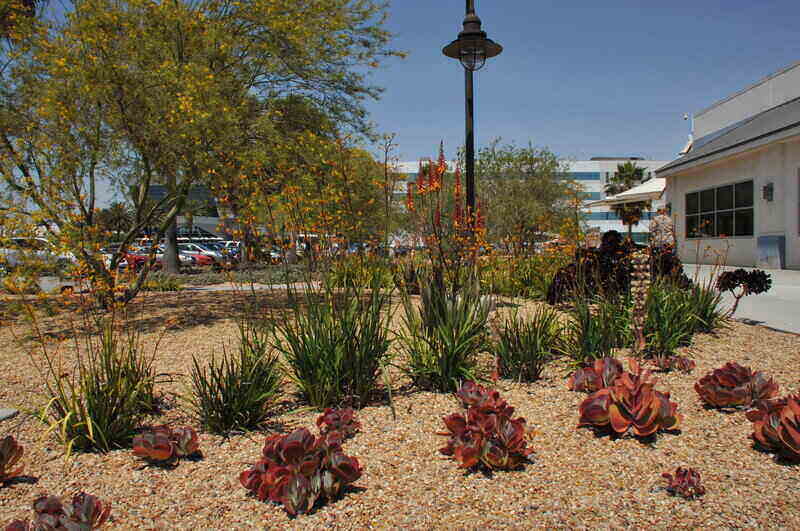
Photo Credit: RawPixel
Creating a water-wise xeriscape is a popular landscaping technique that homeowners in Nevada are using to combat dry desert climates. With xeriscaping, your garden will have little water requirements outside of natural rain.
Advantages of xeriscaping:
- Saves time on maintenance and watering tasks
- Reducing your water consumption helps conserve water resources
- Using little water for irrigation can lead to lower water bills
The following can help you transform your outdoor space with xeriscaping:
- Reduce the use of traditional grass, or select a drought-tolerant grass type.
- Opt for plants that thrive in arid environments and are adapted to local conditions.
- Use the hydrozoning technique to group plants with similar water requirements together.
- Incorporate mulch and organic materials to help the soil retain moisture and reduce water usage.
- Install an irrigation system designed to maximize water efficiency, such as sprinklers with a rain sensor or drip irrigation.
- Create a rock garden or add hardscaping elements like pavers or gravel to your landscape design. This will help reduce the amount of grass and other plants in your yard, which require more water to maintain.
With these xeriscaping tips, you can create a beautiful and sustainable landscape that conserves water and reduces your water bill. Although there is an upfront cost associated with converting to a water-efficient landscape, the benefits are substantial. Plus, you can enjoy long-term savings that far outweigh the initial investment.
If transforming your entire landscape into a xeriscape seems daunting, start small by replacing your water-thirsty flower bed with succulents, cacti, or a decorative rock garden. Doing so also allows you to experiment with different desert landscaping plants and hardscape features without committing to a complete overhaul.
Estimated Cost: The typical cost for xeriscaping is between $1.50 and $2.50 per square foot. But xeriscaping can help you save money on maintenance costs – an average of 36 cents per square foot per year. So, while there may be an initial cost involved, the return on investment is well worth it in the end.
6. Add a Rock Garden
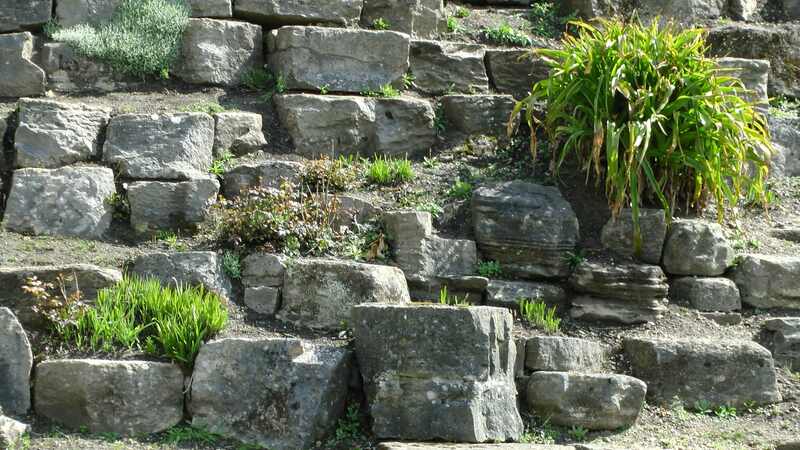
Photo Credit: PublicDomainPictures
If you want to save on your water bill and help conserve water, rock gardens are a fantastic alternative to a traditional garden. Not only do they require no water, but they also can be arranged in an endless number of ways to create a unique and eye-catching landscape.
You can customize your rock garden to suit your style and your yard. Depending on your preferences, you could incorporate boulders, gravel, natural stone, or a mix of these into your design. Plus, you can add your favorite drought-resistant plants, garden ornaments, or even small water features for added interest.
Here are some of the many benefits a rock garden can provide:
- Survive in tough conditions: Rock gardens can handle drought, heat, sun, and wind, making them a great choice for harsh climates.
- Save time, energy, and money: Unlike traditional lawns, rock gardens require no mowing and minimal fertilizing. If your garden needs some extra nutrients, compost or manure can provide them.
- Increase property value: Rock gardens are a great way to increase your property value, with xeriscapes potentially boosting it by up to 14%.
- Protect the environment: Rock gardens are an eco-friendly choice, as they require no mowing, fertilizing, or frequent watering.
- Look beautiful year-round: Mix plants with different bloom times and evergreens to ensure your rock garden looks stunning no matter the season.
- Conserve water: Rock gardens are ideal for drought-prone areas, as they feature drought-tolerant native plants that require only occasional deep watering in the summer.
- Increase curb appeal: A rock garden can turn a dull corner of your yard into an eye-catching focal point. With a diverse assortment of colors, textures, and dimensions, your rock garden is sure to impress.
- Create a peaceful sanctuary: Relax after a long day by sitting in your rock garden, listening to the sound of a fountain or the birds chirping.
- Provide a habitat for wildlife: Native plants attract pollinators like butterflies, bees, and birds, while water features can host aquatic animals such as turtles, fish, and frogs.
By using rocks of different sizes and shapes, you can create a natural rock formation or a modern design. The possibilities are endless, as there are no restrictions based on water or sunlight requirements. With rocks, you are only limited by your imagination.
If you’re looking for inspiration for your rock garden, consider some popular designs like the following:
- Water gardens like koi ponds or fountains can create a relaxing atmosphere and provide a soothing environment to unwind after a long day.
- Japanese rock gardens can promote meditation and contemplation. Rocks usually represent islands, animals, and mountains, while raked gravel symbolizes flowing water.
- Native plant gardens attract a variety of critters, including butterflies, birds, and frogs, while incorporating native flowers and shrubs.
One way to lower the cost of a rock garden is to find the rocks yourself. You can usually find them at construction sites, quarries, or natural settings. However, remember that rocks can be heavy and difficult to transport, so handle them carefully.
Another way to save money is to use affordable materials such as mulch, gravel, or recycled concrete. You can use these materials to create walkways, borders, and accents within your rock garden. Be creative and resourceful when designing a unique and stunning rock garden without breaking the bank.
Estimated Cost: Installing a rock garden can cost anywhere from $400 to $1,000. Or, you can source your own rocks to significantly lower the price.
7. Plant Succulents in Your Garden
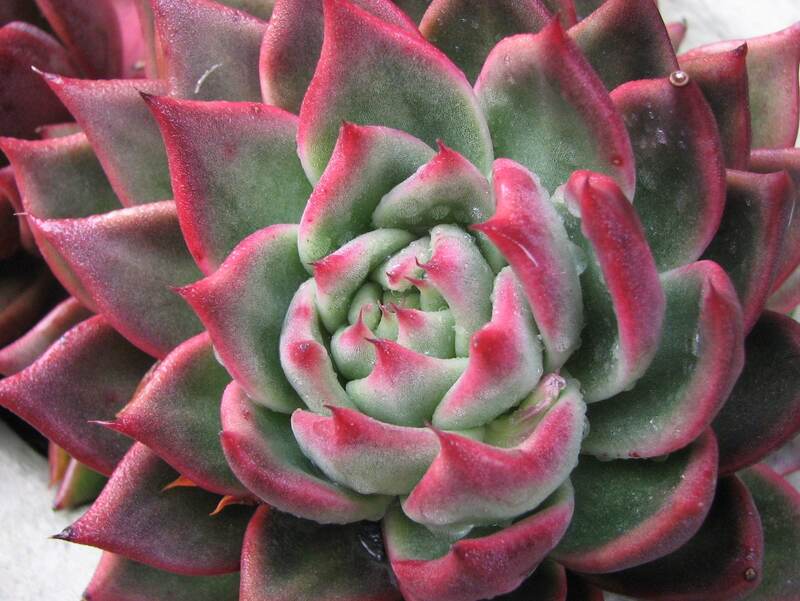
Photo Credit: Seán A. O’Hara / Flickr / CC BY 2.0
Looking for low-maintenance plants that can thrive in the Southwest’s desert environment? Why not try growing a succulent garden? These plants have evolved to survive in arid conditions by storing water in their thick leaves, making them perfect for drought-prone areas.
Some benefits of incorporating succulents into your landscape are:
- They are well-adapted to the desert climate and can tolerate intense heat and dry conditions
- They require minimal watering and care, making them ideal for those with busy schedules or little gardening experience
- With different shapes and sizes available, including classic cacti and rosette-shaped Echeveria varieties, succulents offer a unique and visually appealing addition to your landscape.
Succulents are not only easy to care for but also add texture and interest to any yard. Even if you’re just starting out, succulents are a great choice for creating a beautiful and low-maintenance landscape.
Estimated Cost: Succulents come in all shapes, sizes, and prices, with factors such as species, rarity, and size determining their cost. While some smaller and more common types can be found for as low as $5, others could easily cost over $100 per plant, especially the larger or rarer ones.
8. Add Mulch to Your Plant Beds
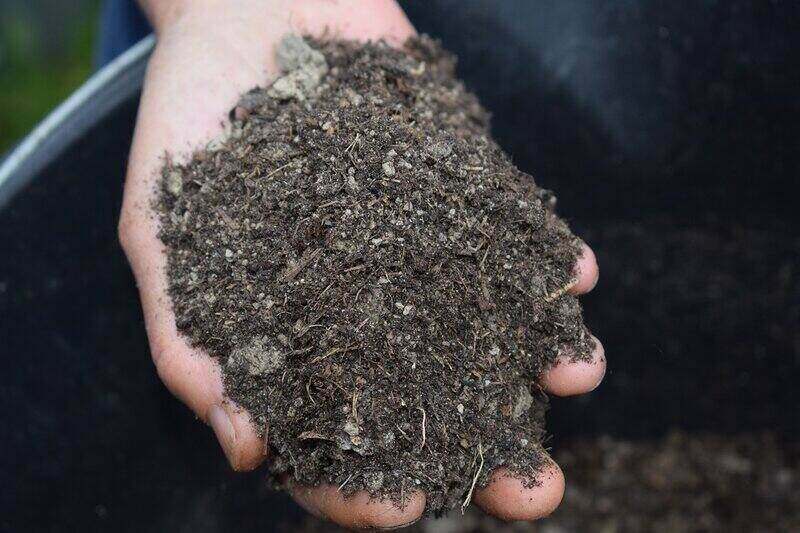
Photo Credit: Pixabay
Transforming your desert landscape into a beautiful oasis doesn’t have to be difficult or costly. One simple and affordable way to enhance your outdoor space is by mulching. Mulch is a loose material spread over the soil around your plants to improve soil health and water retention while suppressing weeds.
There are two mulch types – organic and inorganic. Organic mulches, like pine straws and wood chips, improve soil quality and provide nutrients as they break down over time. However, they require annual replacement. Inorganic mulches, such as rubber nuggets and gravel, are more low-maintenance and last longer.
Here are some benefits of mulching:
- Provides a neat and polished appearance to your landscape
- Helps soil retain moisture and reduces the need for frequent watering
- Suppresses weed growth, thus lowering the amount of maintenance required
Estimated Cost: The cost of mulch varies depending on the type of material used. While it may last longer than organic mulches, rubber mulch is often more expensive, ranging from $7 to $10 per 0.8-cubic-foot bag. Landscape gravel is more affordable, at around $4 to $30 per 0.5-cubic-foot bag, depending on the type of stone. Typically the most cost-effective option, wood mulch usually costs between $3 and $5 per 2-cubic-foot bag.
9. Choose Hardscapes Over High-Maintenance Plants
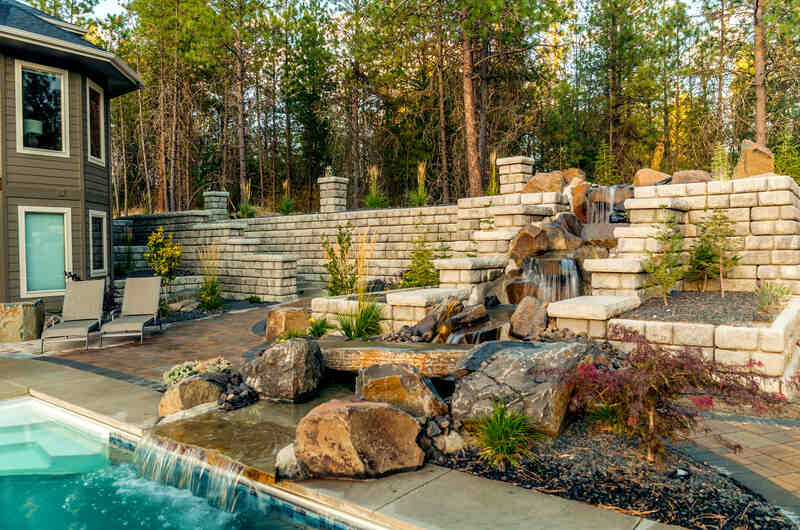
Photo Credit: Redi-Rock International / Flickr / CC BY 2.0
By incorporating hardscapes into your front yard, you can reduce the amount of maintenance required for plants and increase your curb appeal. Hardscapes are features made of non-living materials that add visual interest to your landscape. Here are some hardscapes to consider:
- Patios
- Decks
- Garden walkways
- Stone pavers
- Decorative boulders
- Rock gardens
- Pergolas
- Fire pits
Transforming your outdoor space with hardscapes can be a great investment, but it’s important to know the costs upfront. While hardscapes can be expensive to install, they often provide a better return on investment, as they require less maintenance than plants. Plus, they only need occasional cleaning, helping you reduce water usage while increasing your home’s value.
Estimated Cost: Patios generally cost between $2,000 to $6,000, while deck installations can range from $4,000 to $11,000. For a stone paver project, expect to pay around $8 to $22 per square foot, depending on the type of stone material. If you want to add a fire pit, the cost can be between $500 and $3,000, while a pergola can range from $2,000 to $9,000.
10. Install a Drip Irrigation System
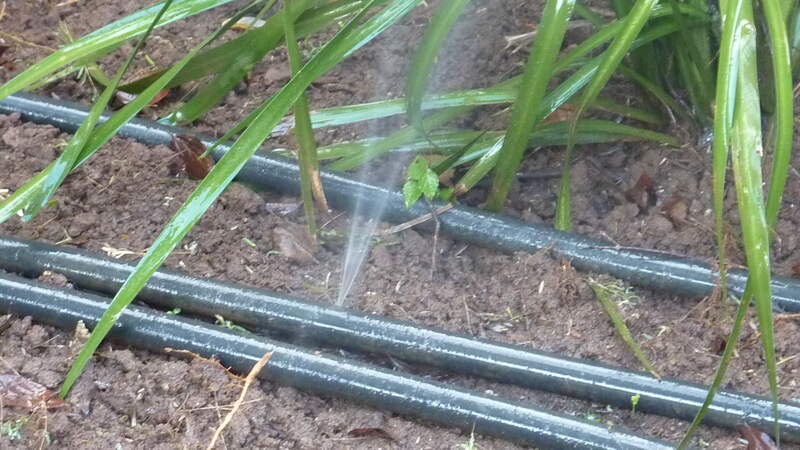
Photo Credit: Sciencehacker / Wikimedia Commons / CC BY-SA 3.0
If you’re concerned about water conservation in Nevada, you might be surprised to learn that an automatic irrigation system can be a smart choice. Rather than using traditional sprinklers, which can waste a lot of water, consider installing a drip irrigation system.
Drip irrigation systems are designed to apply water directly to the roots of your plants, where it’s needed most. Instead of watering a large area all at once, a series of individual emitters deliver water to each plant or group of plants with similar water needs.
With drip irrigation, you can easily adjust the amount of water that each emitter releases. This way, you can ensure your plants receive the right amount of water without any excess.
Some of the benefits of using a drip irrigation system include:
- Prevents water waste and run-off
- Allows you to customize watering to each plant’s specific needs
- Reduces weed growth, as water is only delivered to the plant’s root zone
- Saves water by reducing usage by up to 60% compared to traditional sprinklers
Regardless of whether you choose to hire a professional or do it yourself, a drip irrigation system can be a water-efficient and cost-effective choice for your landscape. By delivering water directly to the roots of your plants, you can reduce water waste and help your plants thrive.
Estimated Cost: If you’re considering installing a drip irrigation system, the cost will depend on whether you choose to have it professionally installed or do it yourself. If you opt for a DIY installation, the cost can be significantly less. You can find drip irrigation kits for as low as $20, although the cost will vary based on the size of your project. Professional installation typically costs between $1.50 and $4.75 per square foot.
FAQ About Drought-Resistant Landscaping Ideas for Nevada
Nevada faces severe drought conditions, making water conservation a critical issue. To address this, the Southern Nevada Water Authority (SNWA) has implemented a mandatory watering schedule that applies to all customers, including residential and commercial properties.
During summer, the schedule limits outdoor watering to three assigned days per week, while there’s one assigned day per week during winter. These watering restrictions apply to all sources of water, including municipal water, private wells, and water delivered by truck.
The SNWA has also implemented specific guidelines for outdoor watering. Watering is prohibited between 11 a.m. and 7 p.m. during summer, as this is when evaporation rates are highest. Additionally, water cannot be allowed to flow off the property or onto the street or sidewalk. Violations of these restrictions can result in fines or other penalties.
Yes. While drought-resistant plants are known for their ability to withstand dry conditions, they still need watering to some extent. The key difference is that they require less water and can tolerate longer periods without it.
You need to provide enough water to establish the plant’s root system. But after that, you can reduce the watering frequency to promote deep root growth. In Nevada’s arid climate, it’s especially important to ensure the plants receive enough water during the hot summer months.
Before adding plants to your desert landscape, you must choose the ones that can withstand the harsh desert climate. Look for plants that are native to the desert or are well-suited to its unique conditions. Some characteristics to look for include:
- Drought tolerance: Desert plants must be able to survive long periods of drought. Look for plants with adaptations, such as thick leaves, small or waxy leaves, or deep roots that help them retain water.
- Heat tolerance: In the desert, temperatures can soar to well over 100°F. Look for plants that can handle extreme heat and sunlight, like those with silvery or hairy leaves that reflect the sun’s rays.
- Soil adaptability: Desert soil can be very different from other types of soil, so it’s essential to choose plants that can adapt to it. Look for plants that can thrive in well-draining soil that may be rocky or sandy.
Get Professional Help for Your Nevada Landscape
With Nevada’s scarce water resources and temperatures reaching scorching heights in the summer, creating an attractive and sustainable outdoor space requires thoughtful planning.
With these ten drought-tolerant landscaping ideas, you can reduce water usage and create a stunning landscape tailored to Nevada’s unique environment. From using native plants to installing artificial turf, there are numerous creative and eco-friendly ways to beautify your property without breaking the bank or depleting the state’s limited water supply.
There’s no better time to invest in the future of your home and the environment than today. Whether you live in Las Vegas, Reno, or another city in Nevada, reach out to a local landscaping pro and let them help you switch to water-efficient landscaping.
Main Image Credit: Lawn Las Vegas / André Corboz / Wikimedia Commons / CC BY-SA 4.0